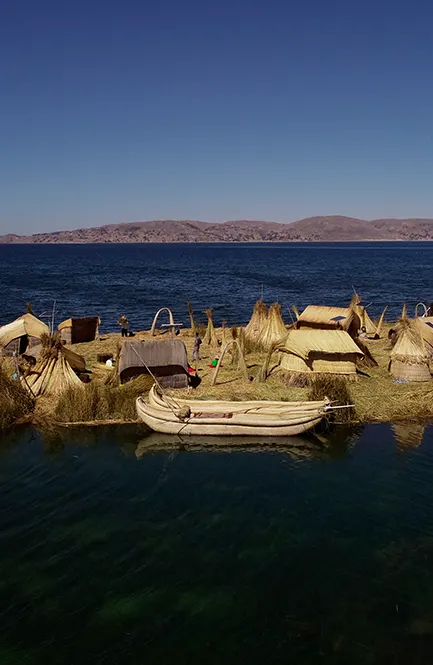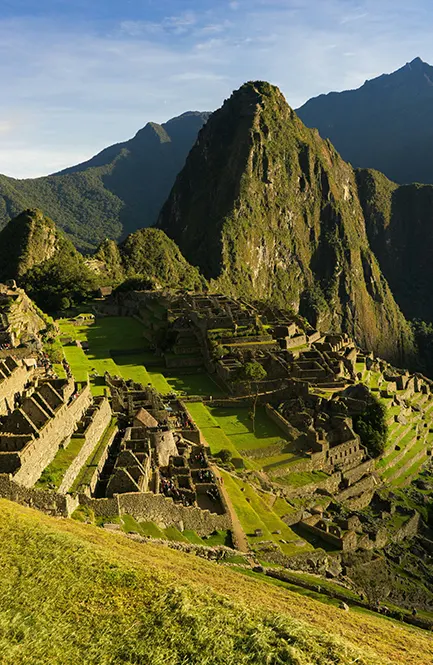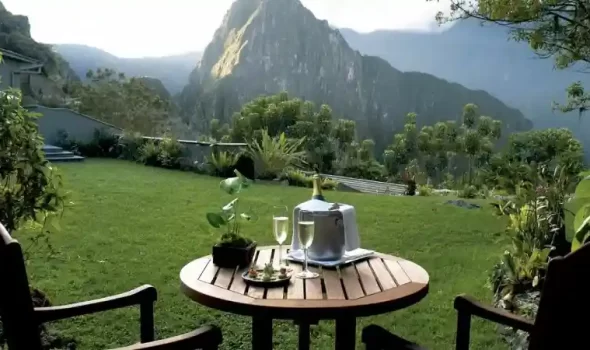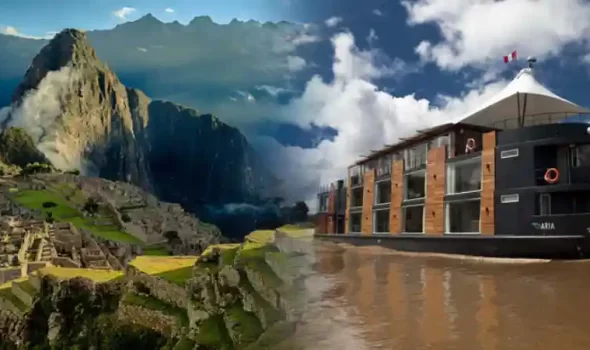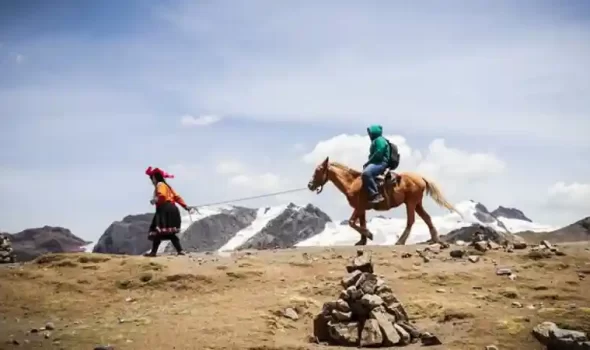Salkantay mountain is an Andean divinity known as protector Apu. For the inhabitants of the Andes, reverence to the apus, sacred mountains, turned into local protectors, did not go unnoticed in time, mountains like the imposing snow-capped Salkantay assume an important role in the Andean cosmovision. Before, during and after the Inca period, the mountains were considered sacred places. The most powerful were usually the highest mountains in a region. Being popular belief that all mountains have their own superior spirits considered protectors of men and people, so they are known under the term of protective Apus.
Join Auri and get to know one of the most beautiful mountains in Cusco, very close to Machu Picchu and where one of the most impressive treks to Machu Picchu passes through.
Location of Salkantay Mountain
It is located in the Cordillera Vilcabamba, in the province of La Convención, district of Santa Teresa. Salkantay is the highest and most important mountain in the Cordillera Vilcabamba and occupies the southern position of the Aobamba valley basin. The Sisaypampa, Orcospampa and Paccha Grande streams rise from its slopes. Towards the Sankantay mountain are three pre-Hispanic roads of Qhapaq Ñan, the Inca roads of Choquechurco, Choquequirao and the colonial road Mollepata.
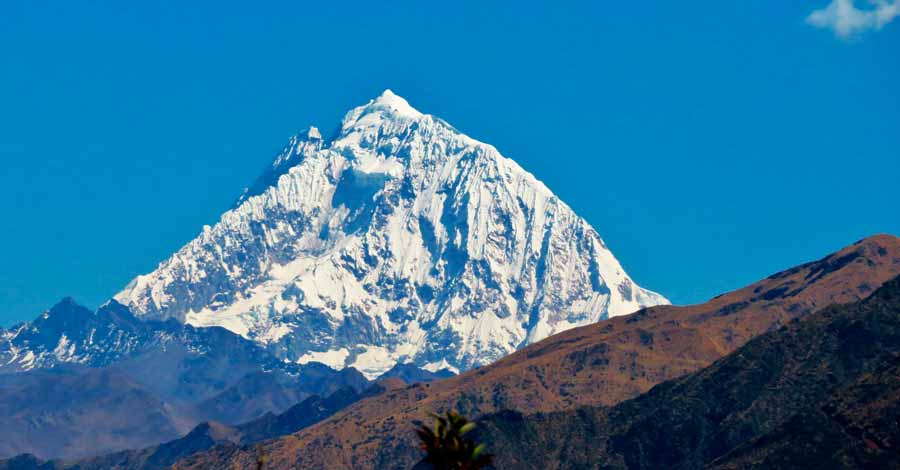
Salkantay mountain height
Geographically speaking, the snow-capped Salkantay, 6271m/20574ft in height. It is the 12th highest mountain in Peru, and the second highest in the Cusco region behind Ausangate.
What does Salkantay mean?
Etymologically its name in Quechua could be translated as “wild mountain” that comes from the words: “Salqa” that means sullen or wild and “Antay” that refers to the action of producing avalanches or avalanches.
Climate in the Salkantay mountain
The climate in the Salkantay snow-capped mountain reaches up to 16° C / 61° F during the day, while at night it can reach a freezing temperature of -10°C / 14°F. While, if we talk about the trekking route, it varies due to the different terrains and different altitudes. The first part of the trail is dry and cold, the second part is warmer and more humid.
Salkantay in Inca times
In Inca times, the snow-capped mountain Salkantay was venerated and offerings were given in special ceremonies. This system was based on the possibility of achieving a safe and abundant production linked to a continuous and complex ritual dedicated to the land, water and the mountain itself; having the liquid element made the Incas and their ancestors practice sacrifices, offerings or significant rituals, constituting the “sacred water” which thaws from the sacred snowy mountains emerging and feeding lagoons and rivers, in that route irrigates natural pasture fields and agricultural spaces for the consumption of animals.
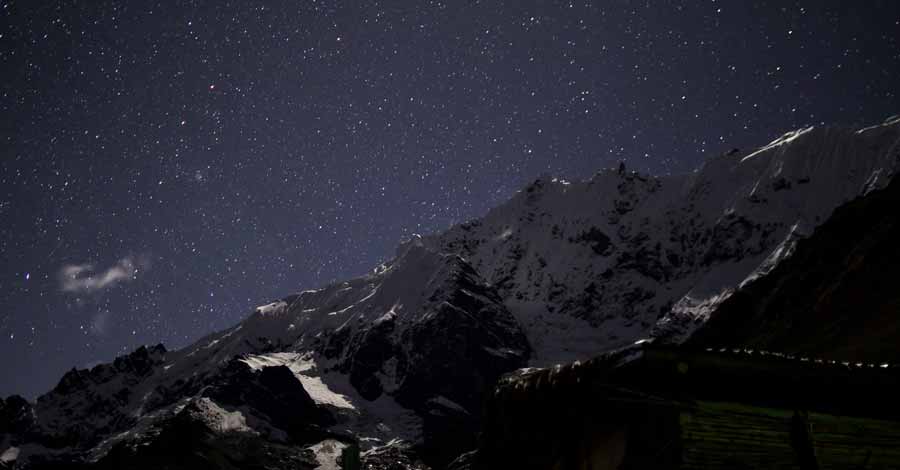
Salkantay, the protective Apu
The Apus do not speak to humans, it is humans, through invocations, offerings, rituals and prayers, who speak to the Apus asking for protection. Their role, as well as that of humans and the major gods, is to ensure abundance and cosmic balance.
In the popular Andean religious imaginary, the apu Salkantay is catalogued as “lord protector” who protects the towns of Limatambo, Mollepata, Machupicchu and Choquequirao located in the Vilcabamba mountain range. The Salkantay remains “majestic and lordly”, unlike the apu Ausangate which is considered “the powerful”.
Currently the Salkantay, retains and persists in its religious symbolic importance among the nearby populations, considered one of the most important mountains in the invocations of the ceremonies of thanksgiving to the apus.
Today, different offerings continue to be made to the Apu Salkantay for different reasons, against the natural phenomenon of hail and crop diseases, in pursuit of production and multiplication of herds, as well as protection in general.
Salkantay and the Inca astronomy
The Salkantay would also be involved in the vital cycles of the Urubamba river or Willca Mayuc river, because the waters of the thaws reach this sacred river for the Incas. According to a beautiful Inca legend: the waters came and fertilized the mother earth through the Urubamba River, the Incas saw these same waters disappear in the Amazon jungle without seeing it reach the ocean; so they believed that its waters returned during the night to their sacred snow-capped mountains from the jungle in the form of a celestial river, which were the stars of the Milky Way.
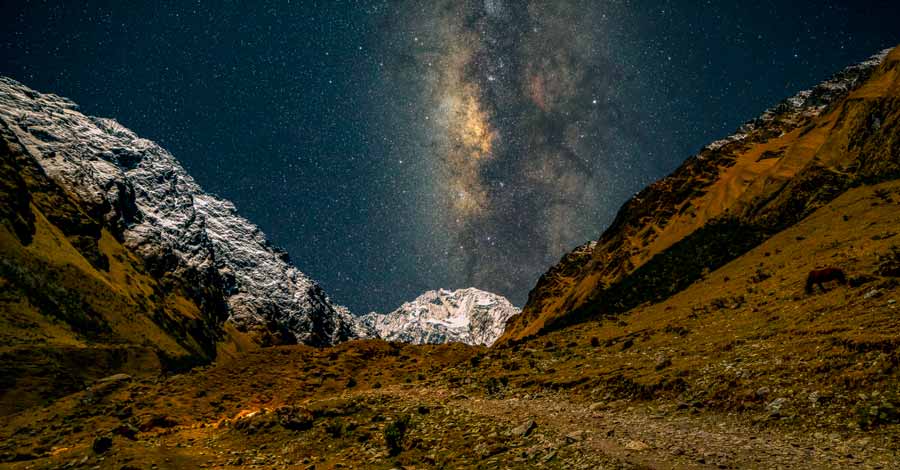
Thawing of the Salkantay snow-capped peak
At present, the lower edge of the Salkantay glacier area is above 4800m/15748ft, and due to the accelerated process of deglaciation, this level will continue to rise in the coming years. The base rock of Salkantay is of granitic type and today it can be seen in many parts of the mountain where due to the process of deglaciation. In the last 40 years, the glacier surface has lost 63.6% (21.91 km22 ) according to figures from the National Water Authority of Peru.
The summit of Salkantay
The summit of the Salkantay presents two summits or heads; one on the east side and the other on the west side, this is known as bicephalous mass. Formerly the west side was more slender and attractive than the east side, the latter in turn was slightly higher due to a serac or large block of ice fragmented by cracks. After the passage of time and the collapse of this serac, the height was practically identical on both summits.
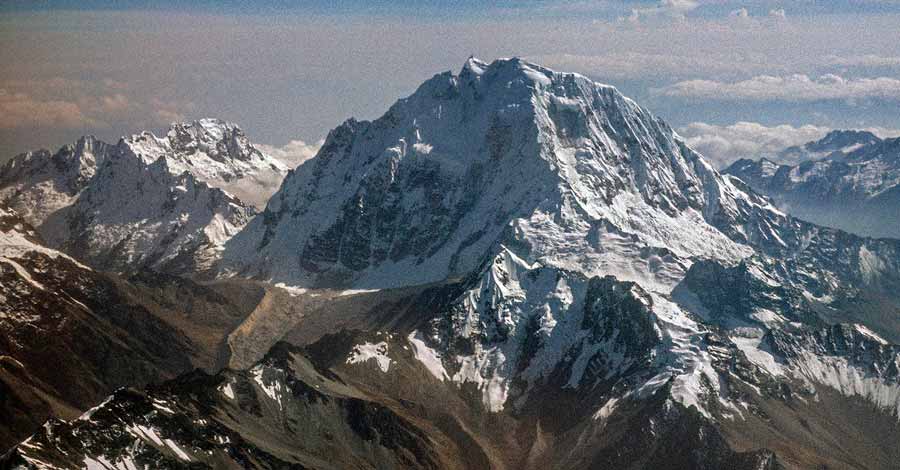
Climbing Salkantay
The snowy Salkantay has been visited by climbers from all over the world, some lived the immense satisfaction of reaching the summit. Others had to withdraw even with tragic results. The mountain holds a series of contradictions and discussions about its first ascent in 1952 when Swiss climbers and a few days later French-American climbers ascended the mountain. The detail is that the Swiss climbed first the East summit (the lowest at that time), while the Americans climbed the West (which was somewhat higher). Because of this, statistics deny the Swiss Bronimman and Marx their first absolute ascent of this sacred mountain since ancient times.
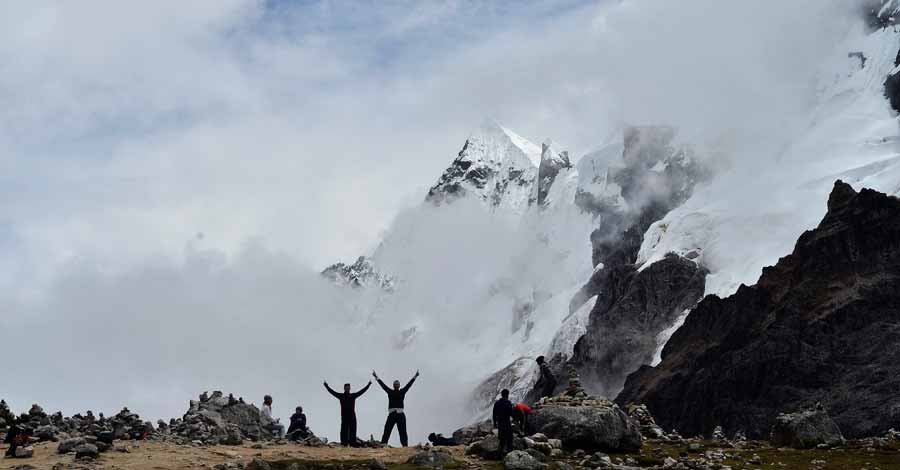
The last ascent to the summit was in June 2013, when Americans Nathan Heald and Thomas Ryan together with Peruvian Luis Crispin reached the summit at 10:30 in the morning after 9 hours of ascent. This made Crispin the first Peruvian to conquer the summit of Salkantay.
Apachetas in the Salkantay Mountain pass
A detail that we can appreciate in the skirts of the Salkantay snow-capped mountain, speaking for example of the Salkantay pass or pass, are the “apachetas”. The apachetas are piles of stones that are placed by hikers on a long journey as route markers, usually in abras or high points always related to roads. Although we do not have a totally clear idea of the function that they fulfilled in their origins. It is known that, currently, it is the travelers who ask the pachamama and the apus to keep misfortunes out of their way to continue the journey with health and tranquility, the apachetas then are a sign of respect, gratitude and at the same time a rite of passage that symbolizes the elimination of fatigue and the restoration of strength.
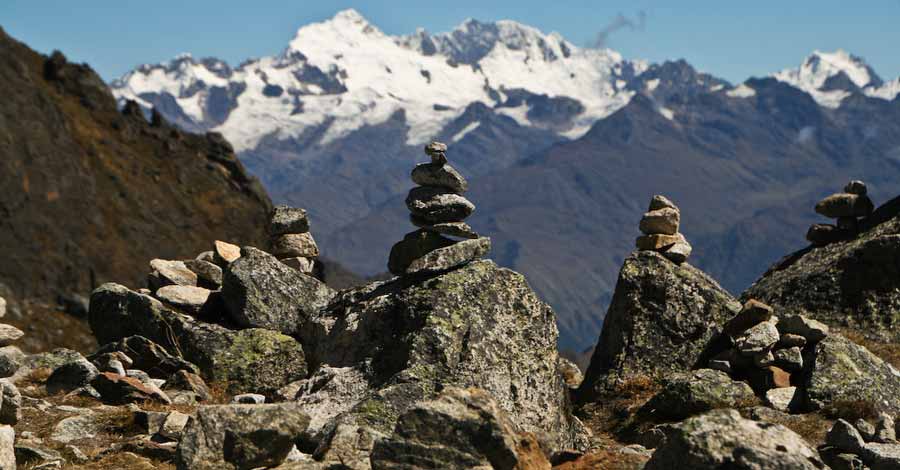
Salkantay Trekking Route│Salkantay Trek
Currently this route is quite popular and one of the most outstanding of all Peru, it is the second favorite route for travelers after the Inca Trail. The Salkantay trek route has a classic duration ranging from 3 to 5 days and allows you to combine nature, culture and history. It leads its explorers through impressive landscapes of the Andes and the jungle rainforest. The highest point is located in the Salkantay pass, in the foothills of the snow-capped mountain at 4630m/15190ft above sea level, which as you advance descends more than 2000 meters or 6500 feets to reach the rainforest or jungle rainforest.
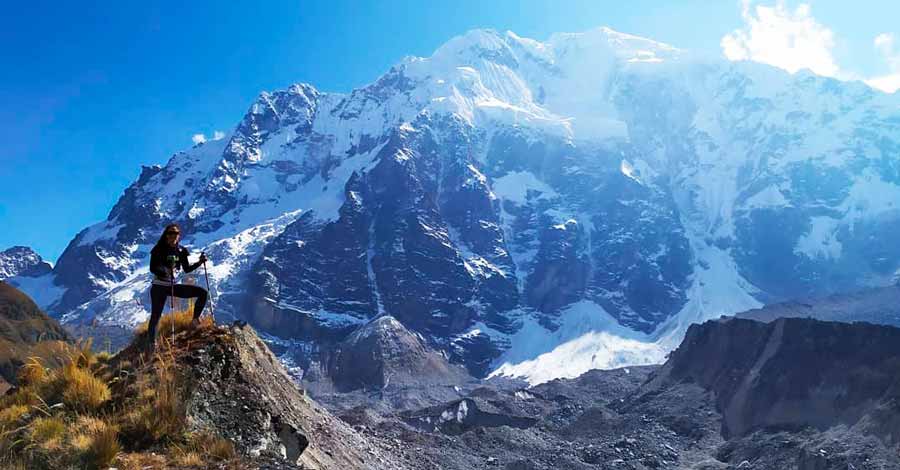
During this hike you will see a series of snow-capped mountain ranges, glacial lakes, pampas, rivers, streams and hot springs. This hike crosses a series of ecological floors loaded with the most diverse varieties of flora and fauna. Of these exotic fauna species we highlight the Andean condors, a wide variety of hummingbirds and spectacled bears, on the side of the flora, if you are a connoisseur of the subject, you can see up to 300 varieties of orchids throughout this area.
Finally, as already mentioned, this hike is part of the Qapac Ñan, which formerly linked this area with Llactapata, an Inca site. From Llactapata you can contemplate a lateral and different view of Machu Picchu and the Vilcanota Canyon from about three kilometers away and through the valley.
Distance of the trek from Salkantay to Machu Picchu
Finally, the trek through the Salkantay has an approximate distance of 75 km/47 miles, and as mentioned is the best alternative option to reach Machu Picchu after the Inca Trail, especially when the entrance permits are sold out. The best time to travel to Salkantay is between the months of April to November, during the dry season in Cusco. This hike also enters the Santa Teresa district, famous for its hot springs in Cocalmayo, considered by many to be the best hot springs in the Cusco region.
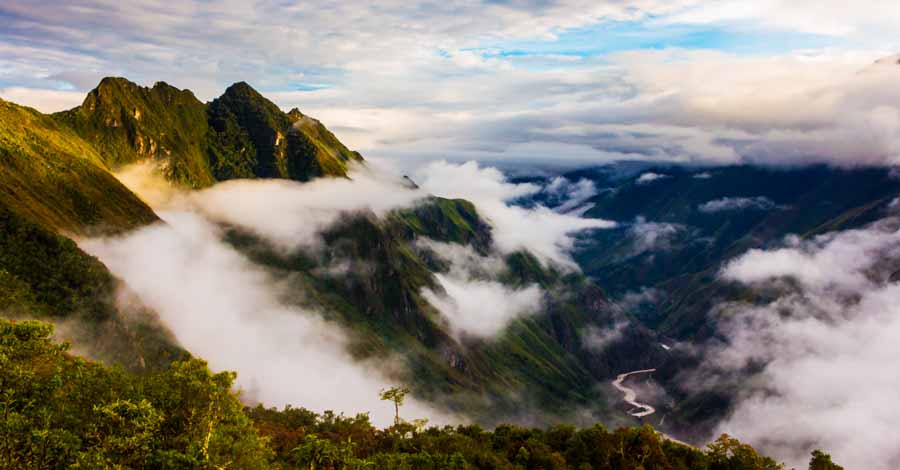
Salkantay mountain, parent mountain of Machu Picchu
Machu Picchu is located in the Vilcabamba mountain range, in the same mountain range as Salkantay. The importance of Salkantay mountain since pre-Inca times still subsists in the daily mentality of the inhabitants of this area of the Andes. Salkantay is considered a sacred mountain.
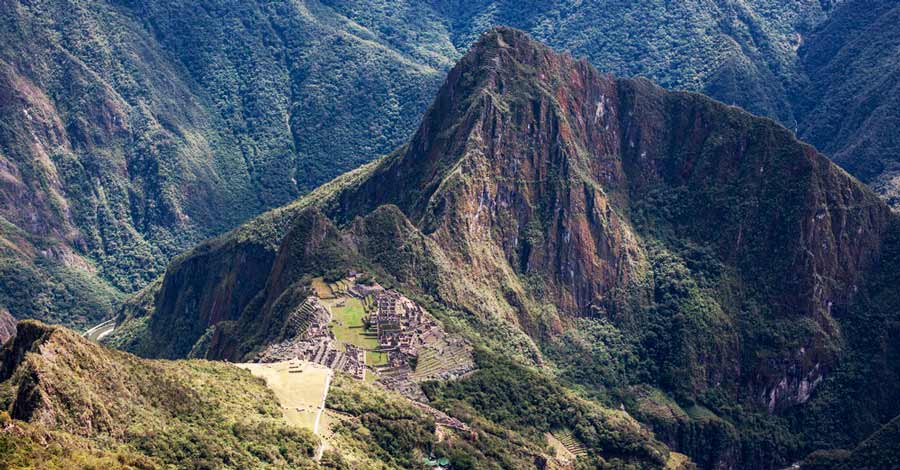
In the local Andean philosophy, Salkantay mountain is also considered one of the most powerful and active deities, he is the father of all the mountains in this area, so the mountain Machupicchu, Choquechurco as well as other mountains of the Vilcabamba mountain range maintain an intimate visual contact with the Salkantay mountain.
Reaching the foothills of the Salkantay mountain or far beyond involves a great exercise of mental fortitude and a will of steel. Overcoming the Salkantay mountain is one of the most unforgettable sensations a human being can experience.
Like this, many other unique, high end and personalized experiences await you in Peru and under the constant company of the professionals of Auri Peru Travel, a great team that puts at your disposal our years of experience providing highly specialized services in the tourism sector.





